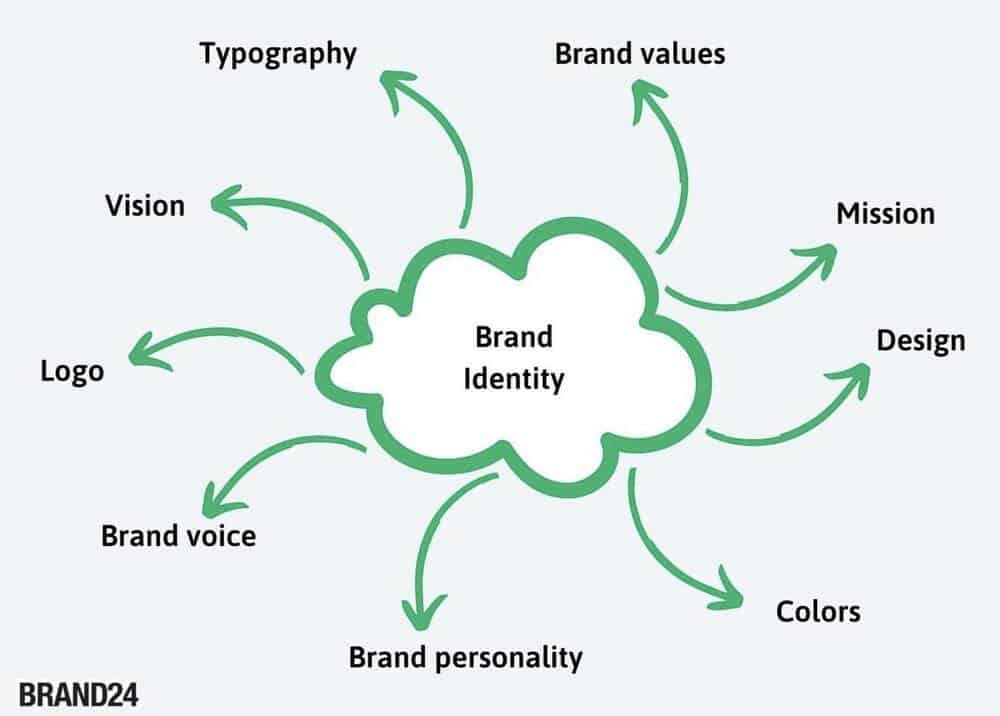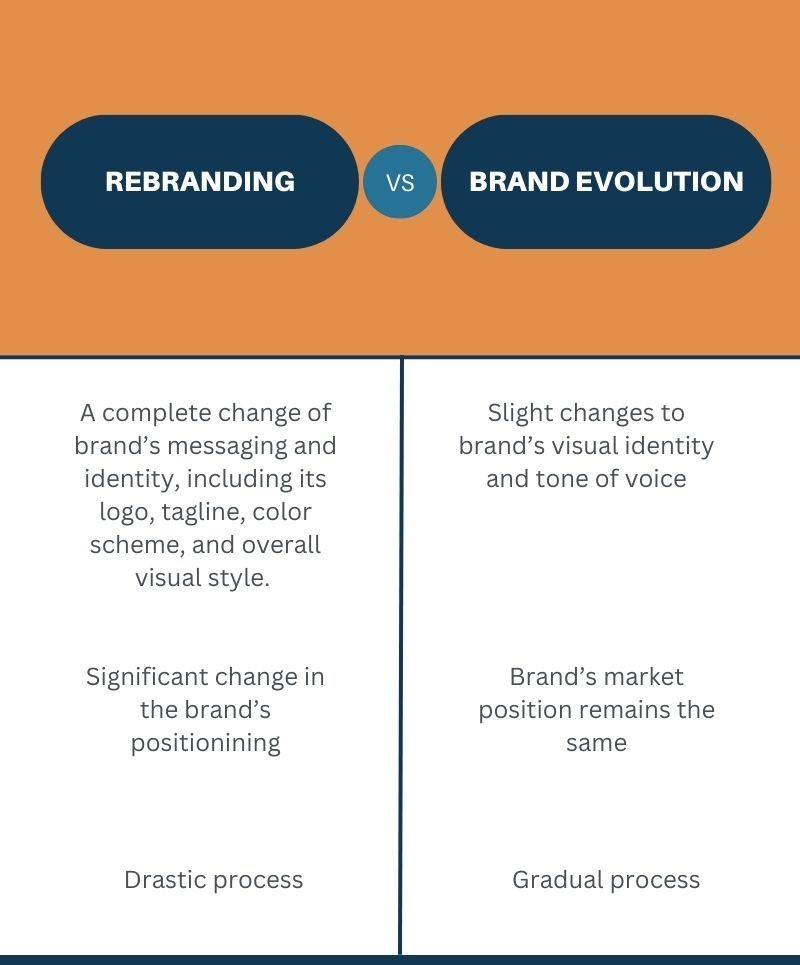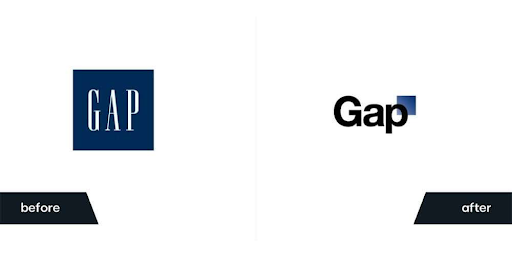Creating a Powerful Visual Identity: Beyond Logos to Complete Brand Expression
Discover how to build comprehensive visual systems that transform your brand's presence across all touchpoints
Understanding Visual Identity Fundamentals
When I first began exploring visual identity design, I quickly realized it goes far beyond just creating a logo. Visual identity encompasses all visual elements that represent a brand – from logos and colors to typography, imagery, and comprehensive design systems. It's the complete visual language that communicates who a brand is at a glance.

It's important to understand the distinction between visual identity and brand identity. While they're closely related, visual communication design focuses specifically on what the brand looks like, whereas brand identity includes non-visual elements like values, voice, and positioning. Think of visual identity as the face of your brand – it's what people see first and remember most.
The Science Behind Visual Identity
There's actual science behind effective visual identity design. Our brains process visual information 60,000 times faster than text, and consistent visual elements create psychological shortcuts that help audiences instantly recognize and connect with brands. This psychological impact is why the most successful brands maintain rigorous consistency across all touchpoints.
Visual Processing Speed Comparison
In my experience working with brands of various sizes, I've found that even sophisticated companies often struggle with transforming abstract brand concepts into clear, structured visual systems. This is where visual personal brand story development becomes crucial, and tools like PageOn.ai can be transformative. PageOn.ai allows you to quickly visualize brand concepts and create cohesive systems without requiring extensive technical design knowledge.
Core Components of Effective Visual Identity Systems
A comprehensive visual identity system is built on several core components that work together to create a cohesive brand experience. Let's explore each of these elements in detail.
Logo Design & Implementation
While logos are just one component of visual identity, they're often the most recognizable. An effective logo system includes not just a primary logo, but secondary variations designed for different contexts and applications. I always recommend creating a flexible logo system that can adapt to various sizes and formats while maintaining brand recognition.
Logo System Components
flowchart TD
A[Primary Logo] --> B[Horizontal Version]
A --> C[Vertical Version]
A --> D[Icon/Mark Only]
A --> E[Wordmark Only]
B --> F[Clear Space Requirements]
C --> F
D --> F
E --> F
F --> G[Minimum Size Specifications]
G --> H[Color Variations]
H --> I[Responsive Adaptations]
When developing logo systems, I've found that clear space requirements and minimum size specifications are often overlooked but crucial for maintaining logo integrity. Using PageOn.ai's visualization tools, you can quickly demonstrate how your logo will appear across various touchpoints without needing complex design software.
Strategic Color Systems
Color is perhaps the most emotionally evocative element of visual identity. Developing a strategic color system involves selecting primary, secondary, and accent colors that not only reflect your brand personality but also function well across all applications.
Primary Colors
Core brand colors used most prominently
Secondary Colors
Support the primary palette in various applications
Accent Colors
Used sparingly to highlight or draw attention
Color psychology plays a significant role in how your brand is perceived. For example, blue often conveys trust and reliability (common in financial brands), while vibrant oranges and reds can evoke energy and excitement. When developing color systems, I always ensure we document technical specifications (RGB, CMYK, HEX, and Pantone values) to maintain consistency across digital and print applications.
PageOn.ai's AI Blocks feature is particularly useful for visualizing color combinations and testing accessibility. I've used it to quickly generate multiple color scheme options and evaluate how they work together before finalizing a brand's palette.
Typography Architecture
Typography is the voice of your visual identity. Selecting the right font pairings requires careful consideration of brand personality, legibility across platforms, and practical implementation concerns.

I approach typography as an architectural system, establishing clear hierarchies for headings, subheadings, and body text. This creates visual order and improves readability. When working with clients, I always address font licensing considerations and provide alternatives for digital and print applications to ensure consistent implementation across all platforms.
Visual communication for designers often hinges on typography choices. With PageOn.ai, I can quickly experiment with different typography combinations and visualize hierarchy systems to find the perfect balance for each brand.
Supporting Graphic Elements
Supporting graphic elements add depth and flexibility to your visual identity system. These include patterns, iconography, photography styles, and illustration approaches that extend your visual language beyond the core logo and colors.
Supporting Graphic Elements Usage
Creating consistent design treatments ensures your brand feels cohesive across all touchpoints. For photography and illustration, I develop clear style guides that define the mood, lighting, composition, and subject matter that align with the brand's personality.
Visual communication in media design increasingly includes motion principles for digital applications. PageOn.ai's Deep Search feature has been invaluable for finding and integrating relevant visual assets that match specific brand styles, saving hours of manual searching.
Building a Comprehensive Visual Identity System
Creating individual visual elements is just the beginning. The real power comes from building these components into a comprehensive, usable system that ensures consistency across all brand touchpoints.
Visual Identity System Structure
flowchart TD
A[Visual Identity System] --> B[Guidelines Documentation]
A --> C[Asset Libraries]
A --> D[Templates & Components]
A --> E[Management Systems]
B --> B1[Usage Rules]
B --> B2[Implementation Examples]
B --> B3[Do's & Don'ts]
C --> C1[Logo Files]
C --> C2[Color Palettes]
C --> C3[Font Files]
C --> C4[Graphic Elements]
D --> D1[Digital Templates]
D --> D2[Print Templates]
D --> D3[UI Component Library]
E --> E1[Cloud Storage]
E --> E2[Version Control]
E --> E3[Access Management]
Documentation & Guidelines
In my experience developing visual identity systems for organizations of various sizes, comprehensive documentation is essential. Usage guidelines ensure consistency across teams and applications, even when different designers or agencies are involved in implementation.
Effective guidelines don't just show what the brand elements are – they demonstrate how to use them correctly. I always include clear examples of proper usage alongside common mistakes to avoid.
Templates & Component Libraries
Creating reusable templates and component libraries dramatically improves implementation efficiency. For digital applications, this might include UI component libraries that developers can easily implement. For print and marketing materials, templates ensure that even non-designers can create on-brand communications.

Storage & Organization Systems
Cloud-based storage and organization systems for visual identity assets have become standard practice. These systems ensure that everyone has access to the most current versions of brand assets and guidelines.
PageOn.ai streamlines the creation of visual identity systems through AI-powered structure building. I've found this particularly useful for quickly generating organized frameworks that can then be customized to specific brand needs. The ability to create structured visual systems without starting from scratch has significantly reduced development time for my clients.
Visual Identity Applications Across Touchpoints
A truly effective visual identity system must work seamlessly across all brand touchpoints. Each application presents unique challenges and opportunities for expressing your brand.
Brand Touchpoint Map
flowchart TD
A[Brand Touchpoints] --> B[Digital Presence]
A --> C[Print Materials]
A --> D[Environmental Design]
A --> E[Product Packaging]
B --> B1[Website]
B --> B2[Social Media]
B --> B3[Email Marketing]
B --> B4[Mobile Apps]
C --> C1[Business Cards]
C --> C2[Brochures]
C --> C3[Letterheads]
C --> C4[Presentations]
D --> D1[Office Spaces]
D --> D2[Retail Environments]
D --> D3[Signage]
D --> D4[Event Displays]
E --> E1[Product Labels]
E --> E2[Boxes & Containers]
E --> E3[Shipping Materials]
Digital Presence
Digital applications of visual identity present unique challenges due to varying screen sizes, resolutions, and contexts. Websites, social media, email marketing, and apps all require thoughtful adaptation of visual identity elements while maintaining consistency.
I've found that responsive design principles are essential for digital applications of visual identity. Elements must scale and adapt while maintaining their core characteristics. Symbol visuals in art and design can be particularly effective in digital environments where simplicity and quick recognition are crucial.
Print Materials
Despite the digital transformation of many businesses, print materials remain important touchpoints for many brands. Business cards, letterheads, brochures, and packaging all provide tangible expressions of your visual identity.

Print applications often require special consideration for color accuracy, material selection, and production techniques. I always ensure that visual identity guidelines include specifications for these variables to maintain consistency.
Environmental Design
Office spaces, retail environments, and signage provide immersive opportunities to express visual identity. These three-dimensional applications can create powerful brand experiences when executed thoughtfully.
Using PageOn.ai to visualize how identity elements work across different applications has been a game-changer in my process. It allows me to quickly show clients how their visual identity will translate to various environments without expensive mockups or prototypes.
Visual Identity Evolution and Management
Visual identities are not static – they must evolve over time to remain relevant while maintaining core recognition. Managing this evolution is a delicate balance between consistency and adaptation.

Controlled Evolution Processes
I've found that establishing clear processes for controlled evolution of visual identity over time is crucial. This includes regular audits, feedback collection, and scheduled review periods to assess whether the current system is meeting business needs.
Successful brands typically evolve their visual identities gradually rather than making dramatic shifts. This allows them to maintain brand equity while refreshing their appearance to stay current.
Balancing Consistency with Flexibility
The most enduring visual identity systems strike a balance between rigid consistency and adaptive flexibility. They establish clear "non-negotiable" elements that must remain constant, while allowing for creative expression within defined parameters.
Consistency vs. Flexibility Balance
Managing Multi-Brand Systems
Managing visual identity across multiple sub-brands or product lines presents additional challenges. I've worked with several organizations to develop "house of brands" or "branded house" approaches that maintain appropriate relationships between parent and child brands.
PageOn.ai's Agentic capabilities have proven valuable for helping brands adapt visual systems while maintaining core identity elements. The platform can suggest variations that respect established guidelines while offering fresh approaches for different contexts or audiences.
Measuring Visual Identity Effectiveness
Like any business investment, visual identity systems should be measured for their effectiveness. Several approaches can help evaluate whether your visual identity is achieving its objectives.
Brand Recognition Metrics
Brand recognition testing measures how quickly and accurately audiences can identify your brand based on visual elements. These tests might include logo recognition studies, color association tests, or visual element recall exercises.

Audience Perception Research
Understanding how your visual identity affects audience perception is crucial. Research techniques might include surveys, focus groups, or semantic differential scales that measure emotional and attribute associations with your visual identity.
Brand Perception Attributes
Competitive Visual Positioning
Analyzing how your visual identity positions you relative to competitors can provide valuable insights. This might include perceptual mapping exercises or competitive audits that evaluate distinctiveness and category fit.
PageOn.ai has been particularly useful for creating visual presentations of brand performance data and identity impact. Its ability to transform complex data into clear, compelling visualizations helps stakeholders understand the return on investment in visual identity systems.
Case Studies: Successful Visual Identity Systems
Examining successful visual identity systems across different industries provides valuable insights into effective approaches and best practices.
Tech Industry Visual Identity
In the tech industry, visual identities often focus on innovation and sophistication. Companies like Apple exemplify this approach with minimalist aesthetics, clean typography, and a restrained color palette. Their visual identity system demonstrates how simplicity can create powerful recognition and brand equity.

Retail Brand Transformation
Retail brands often undergo visual identity transformations to stay relevant to changing consumer preferences. Target's evolution from a basic discount retailer to a design-forward brand demonstrates how visual identity can shift market perception while maintaining core recognition.
B2B Visual Identity Success
B2B companies face unique challenges in visual identity design, balancing professionalism with distinctiveness. IBM's visual identity system shows how a B2B brand can evolve over time while maintaining its core equities, using a consistent color palette and typography system while adapting to contemporary design trends.

These case studies demonstrate how visual consistency builds brand equity over time. The most successful brands maintain core visual elements while thoughtfully evolving other aspects to stay relevant.
Creating compelling visual case study presentations is another area where PageOn.ai's narrative capabilities shine. I've used the platform to transform complex brand evolution stories into clear, visually engaging presentations that effectively communicate the business impact of visual identity investments.
Creating Your Visual Identity Roadmap
Developing or refreshing a visual identity system requires a structured approach. Based on my experience with numerous brands, I've developed a step-by-step process that can guide your efforts.
Visual Identity Development Process
flowchart TD
A[Research & Discovery] --> B[Brand Strategy Alignment]
B --> C[Concept Development]
C --> D[Design System Creation]
D --> E[Guidelines Documentation]
E --> F[Implementation Planning]
F --> G[Rollout & Training]
G --> H[Monitoring & Refinement]
A --> A1[Audience Research]
A --> A2[Competitive Analysis]
A --> A3[Current Brand Audit]
B --> B1[Define Brand Attributes]
B --> B2[Set Visual Goals]
C --> C1[Logo Exploration]
C --> C2[Color Studies]
C --> C3[Typography Testing]
D --> D1[Element Creation]
D --> D2[System Building]
D --> D3[Application Testing]
Resource Planning
Visual identity development requires careful resource planning. Timeline considerations should account for research, design exploration, stakeholder feedback, refinement, and implementation planning. I typically recommend allocating 3-6 months for a comprehensive visual identity development process, depending on organizational complexity.
| Phase | Typical Duration | Key Resources |
|---|---|---|
| Research & Discovery | 2-4 weeks | Research team, stakeholder availability |
| Concept Development | 3-6 weeks | Design team, creative director |
| Design System Creation | 4-8 weeks | Design team, digital developers |
| Guidelines & Documentation | 2-4 weeks | Design team, technical writers |
| Implementation & Rollout | 1-3 months | Cross-functional teams |
Stakeholder Engagement
Successful implementation of a visual identity system requires buy-in from stakeholders across the organization. I recommend developing a comprehensive stakeholder engagement strategy that includes education, involvement in key decisions, and clear communication about the business benefits of the new system.
PageOn.ai has transformed how I approach the initial stages of visual identity development. Its ability to quickly transform abstract brand concepts into comprehensive visual identity roadmaps provides clients with a clear vision of the process and outcomes, facilitating better decision-making and alignment from the start.
Transform Your Visual Expressions with PageOn.ai
Create stunning, cohesive visual identity systems without complex design software. Turn your brand concepts into clear, structured visual languages that communicate consistently across all touchpoints.
Start Creating with PageOn.ai TodayFinal Thoughts: The Evolution of Visual Identity
As I've explored throughout this guide, visual identity is far more than just a logo – it's a comprehensive system that communicates who your brand is across all touchpoints. In today's visually saturated world, a strong, consistent visual identity is more important than ever for building recognition and trust.
The most successful visual identity systems strike a balance between consistency and flexibility, providing clear guidelines while allowing for creative expression within defined parameters. They evolve thoughtfully over time, maintaining core recognition while adapting to changing contexts and audiences.
Tools like PageOn.ai are transforming how we approach visual identity development, making it possible to quickly visualize concepts, experiment with different approaches, and create comprehensive systems without extensive technical design knowledge. This democratization of design capabilities allows more brands to develop sophisticated visual identities that effectively communicate their unique value.
Whether you're developing a new visual identity from scratch or evolving an existing system, I hope this guide provides valuable insights and practical approaches to create a visual expression that authentically represents your brand and resonates with your audience.
You Might Also Like
Breaking the Ice: Transform Your Opening Minute from Predictable to Powerful
Discover how to transform the first 60 seconds of your presentation from cliché to compelling with visual hooks, interactive strategies, and storytelling techniques using PageOn.ai.
From Status Quo to Solution: Crafting the Perfect Pitch Narrative Arc | PageOn.ai
Learn how to transform your business presentations with powerful status quo to solution narratives. Discover visual storytelling techniques that captivate investors and stakeholders.
From What to Why in Business Presentations: Purpose-Driven Storytelling Strategy
Transform your business presentations from data-heavy information delivery to purpose-driven storytelling that engages audiences and drives decisions with these expert strategies.
Transform Raw Text Data into Compelling Charts: AI-Powered Data Visualization | PageOn.ai
Discover how AI is revolutionizing data visualization by automatically creating professional charts from raw text data. Learn best practices and real-world applications with PageOn.ai.